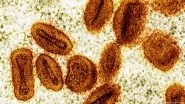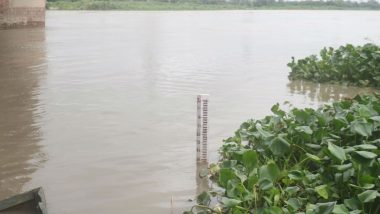New Delhi, February 5: The water quality of the Yamuna in Delhi improved during the lockdown due to the stoppage of industrial effluent discharge, availability of more water for dilution and absence of polluting human activities, the government told Lok Sabha on Thursday. It said the Central Pollution Control Board (CPCB) carried out water quality tests at three locations -- Palla, Nizamuddin bridge and Okhla -- in April last year.
The assessment of the water quality in April as compared to the pre-lockdown period in March showed improvement at Palla, where the river enters Delhi, in terms of biochemical oxygen demand (BOD), and at Nizamuddin Bridge and Okhla in terms of dissolved oxygen (DO) and BOD.
Biochemical oxygen demand is the amount of dissolved oxygen used by microorganisms in the biological process of metabolizing organic matter in water. Dissolved oxygen is the amount of oxygen available to living aquatic organisms. UPSC Examination Update: Centre Allows Extra Chance To Aspirants Who Missed Civil Services Exam 2020 Due to COVID-19 Outbreak.
High BOD levels mean there is a high level of microorganisms in the water, and a high content of organic material that is broken down by the organisms. The greater the BOD, the lower the amount of dissolved oxygen available for fishes and other aquatic life.
The improvement in the water quality was attributed to the "release of fresh water from Wazirabad Barrage" which washed away sediments, settleable and colloidal form of pollutants in the river, Minister of State for Jal Shakti Rattan Lal Kataria informed Lok Sabha.
Other reasons included the stoppage of industrial effluent discharge (about 35.9 million litres a day), "good penetration" of solar radiation in the water body and the absence of human activities such as throwing of garbage, bathing, washing of clothes due to the lockdown.
(The above story is verified and authored by Press Trust of India (PTI) staff. PTI, India’s premier news agency, employs more than 400 journalists and 500 stringers to cover almost every district and small town in India.. The views appearing in the above post do not reflect the opinions of LatestLY)













 Quickly
Quickly












